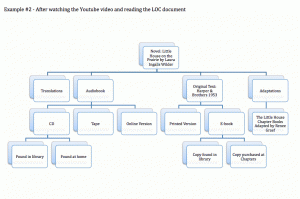Research Synopsis
For those new to my blog, this post is my third post for an assignment I am doing for a library course at UBC. I initially started out wondering how to incorporate technology and digital literacy skills in a play-based kindergarten classroom. Along the way I have narrowed my topic and am now in the process of learning more about digital storytelling in kindergarten.
In my last blog post, I listed 5 resources that I found to be helpful in understanding how to use digital storytelling and why I would want to use digital storytelling in the classroom. While gathering these resources, I came across many others. I chose the 5 I did because I wanted a variety of sources. I have academic papers, magazine articles, a blog, an interview between educators and a news article that all speak towards the idea that digital storytelling helps students develop traditional literacy skills as well as New Literacy skills.
Marsh & Vasquez’s interview “Aligning Instruction to Developmental Needs in Critical and Digital Literacies” has actually made me question my entire notion of “developmentally appropriate practice” (2012). This reflection could be dedicated to entirely different blog post! However, their interview has also created a foundation to better understand the other resources I have chosen which discuss digital storytelling more specifically! Marsh & Vasquez suggest that even young children can engage in the practices we generally see with older students who are using web 2.0 tools if these practices are “framed in ways that are meaningful to [students]” (2012, 154). Marsh says “anything is possible if you stage it in ways that are meaningful to children and embed playfulness and creativity at the centre of pedagogy” (2012, 154). Vasquez says that we can’t just hear about the latest technology and incorporate it into our classroom (2012, 154). “We need to be sure we are actually starting from young children’s experiences” and build it into what is going on in our classroom (2012, 154).
In the other resources I have selected, the authors discuss their experiences with digital storytelling in kindergarten. Candreva (2010) states “digital storytelling provides opportunities to practice and reinforce developing literacies and allows teachers of young children to use instructional technology in transformative ways” (3). While, I wish this quote said that digital storytelling allows students to use technology in transformative ways, I believe this is what is at the heart of every resource I have found. A common theme among the resources is that digital storytelling allows students to learn 21st century skills including planning, collaborating, constructing meaning and sharing as well as developing traditional literacy skills such as oral language, fine motor skills and printing with paper and pencil (Candreva 2010 & 2012, Liotti 2010). Matt Gomez’s blog as well as Liotti & Haggety’s paper (2010) provide many examples of how to incorporate digital storytelling into the classroom as well as a list of web 2.0 tools that can be used to create digital stories.
After reading through all of my resources, I believe that my students could benefit from using digital storytelling. As Marsh & Vasquez said, I need to “kid-watch” and incorporate this technology into the classroom by starting with the “children’s experiences” (2012, 154). Currently, the majority of my class is obsessed with princesses and princes. They use our costumes as royal outfits; they write in their journals about queens and kings; they make crowns in the art centre and they have an elaborate recess game they play. Perhaps, I could find a meaningful way of using this interest to make a digital story with the class. Initially, we could create a class story so that students could become comfortable with the tools as well as the process. As students become more comfortable with this new method for storytelling, I could gradually release control and students could create their own story. Now, I need to find the time in our already very busy schedule to do this!
Citations
Candreva, C. (2012). Digital storytelling in kindergarten: Merging literacy, technology, and multimodality. 72(9), 3230-3230.
Candreva, C. (2010). Paving New Pathways to Literacy in the 21st Century. School Talk , 15(2), 3.
Gomez, M. http://mattbgomez.com/category/digital-storytelling/
Liotti, N., & Haggerty, K. (2010). Falling into Technology. School Talk , 15(2), 4-6.
Marsh, J., & Vasquez, V. (2012). Aligning instruction to developmental needs in critical and digital literacies. Language Arts, 90(2), 151.





